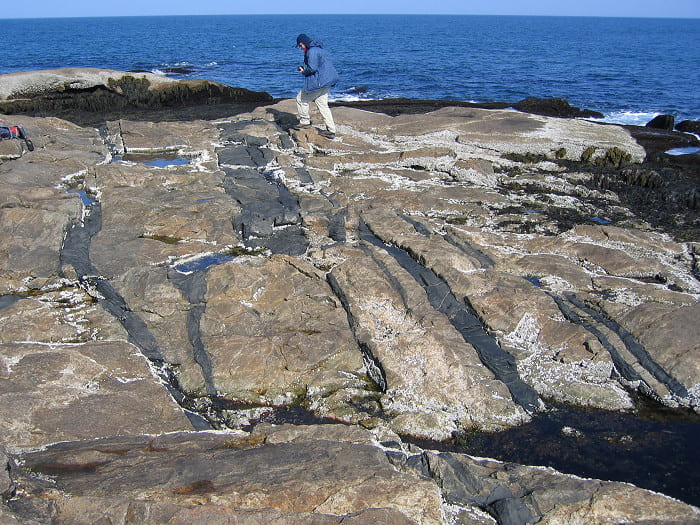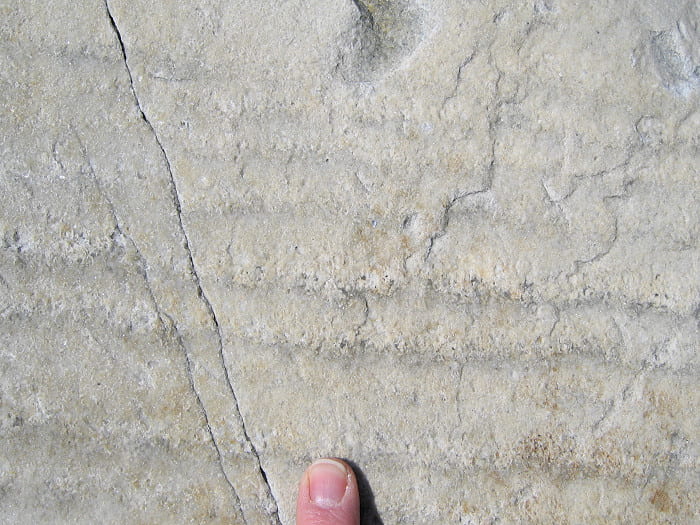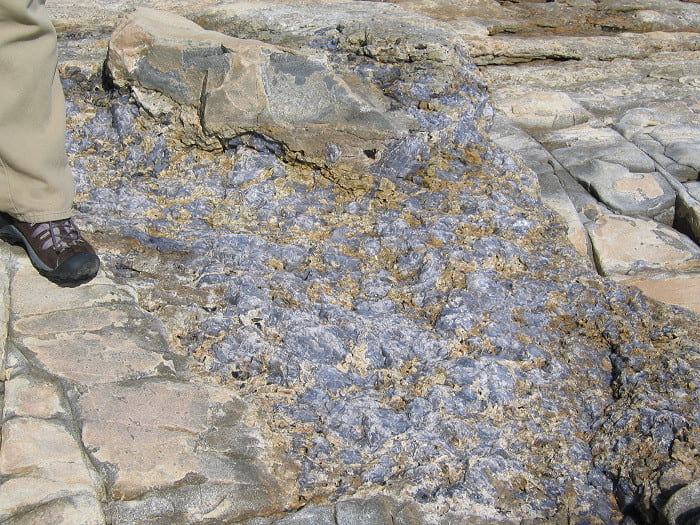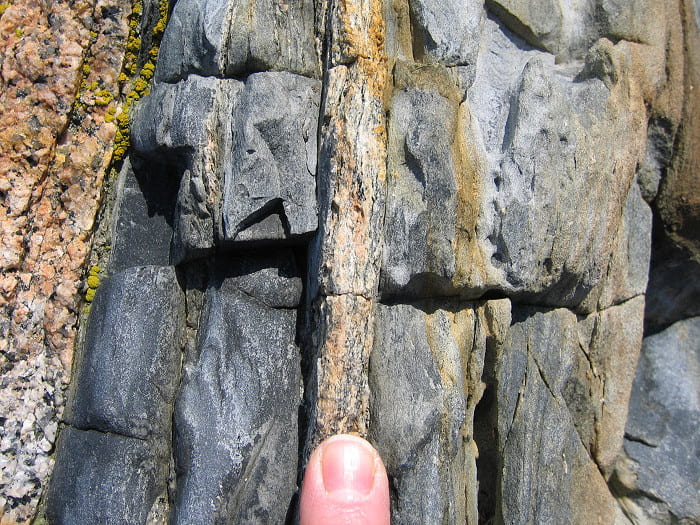Cape Ann Granite, Cape Ann, Massachusetts
The Cape Ann is an iron-rich Late Ordovician alkaline granite, cut by dikes of aplite, pegmatite, and alkaline basalt. The granite contains the minerals annite, fayalite, and hastingsite, and this is the type locality for annite, the iron end member of biotite.

A flat pavement outcrop on Cape Ann. Alkali basalt dikes that cut the granite probably represent some of the mantle-derived liquids that heated the crust and permitted large-scale melting and production of the Cape Ann Granite itself, and related rocks in the area.

This is the granite itself. It’s a white to gray, hypersolvus granite with one feldspar (perthite). Here, the granite contains ~30% quartz, and <10% mafic minerals that include annite, hastingsite, and fayalite.

There are large expanses of aplite. This is one side of an aplite dike with graded layering, the grading being differentiated by grain size. The layering is parallel to the dike wall, with the interior of the dike toward the top. The grading seems to show precipitation of fine-grained quartz, feldspar, and mafic minerals, followed by progressive coarsening of the grain size inward, to the beginning of the next layer. This may represent rapid crystallization during sudden drops in PH2O, perhaps during venting events, followed by repressurization and inward coarsening of growing crystals. Alternatively, this may represent successive stages in dike widening.

This aplite body is partly made up of small pegmatitic segregations, possibly from unmixing of an aqueous fluid phase during crystallization. The fluids, immiscible with the silicate liquid at low pressure, separated out and allowed crystallization of the coarser pegmatitic bits. Or, maybe they are formed by some other process.
This looks a lot like the wavy pyroxene rock in the Skaergaard intrusion of eastern Greenland.

Larger bodies of pegmatite cut the granite and aplite. This pegmatite dike segment is especially rich in blue quartz, along with coarse perthite and small amounts of somewhat large mafic minerals.

This pegmatite has large, hexagonal quartz crystals that obviously grew into void space. The blue color of the quartz is quite vivid in the sunlight, and the image doesn’t really do justice to it. The quartz crystals are surrounded by coarse alkali feldspar. The dark crystals at the bottom left are the remains of cigar-size fayalite crystals.

Edge of a pegmatite body, showing inward-coarsening textures (center of the pegmatite is to the top). Blue quartz, perthite, and the altered remains of pencil-size fayalite crystals can be seen.

This is a close-up of a pegmatite, showing blue quartz, perthite, and fayalite crystals. The fayalite makes up the black, coarsely fractured cores to the dark grains. The fine-grained rims are made of subsolidus reaction products that include magnetite, hastingsite, and biotite.

Well exposed on this coast are sparse, medium-gray, nearly vertical mylonite zones. They look like gray dikes, but close examination reveals intense deformational fabrics, most obvious along the mylonite margins. This mylonite contains relict pink alkali feldspars. The motion sense on this nearly horizontal outcrop surface is dextral.
